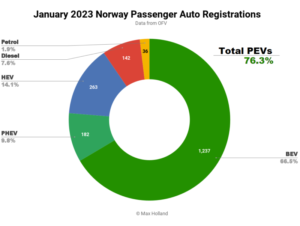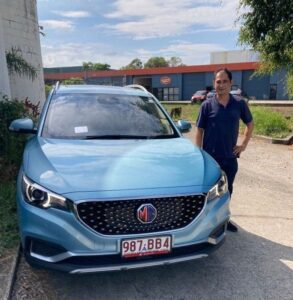Light pollution affects more than just our ability to stargaze — it can also have a major impact on animals.
With excessive artificial light interfering with their natural sleep cycles, nocturnal creatures like bats, owls, and fireflies can have a tough time finding food, attracting mates, or staying safe from predators. Other animals, such as sea turtles and migratory birds, rely on natural light cues to navigate their way through the world. Bright city lights and other man-made sources can throw them off course, leading to disorientation, exhaustion, and sometimes even death.
It’s important for us humans (hey, we’re animals, too!) to be mindful of the impact of our actions on the world around us, and do what we can to reduce unnecessary light pollution. We’ll cover some great ways you can cut back on your family’s light pollution in a bit, but first, let’s look at a very compelling reason everybody should be doing that this week!
Migration Alert!! 400 million birds will be migrating tonight—a good time to turn off nonessential outdoor lighting and to treat reflective windows to keep birds safe. Learn more at https://t.co/CboDf0WiNr #LightsOut #LightsOutAlert pic.twitter.com/4fhH9cbCRs
— Cornell Lab (@CornellBirds) May 10, 2023
You can learn a lot more about this at Cornell’s BirdCast website, but in sum, the problem is that artificial light sources can cause a lot of problems for birds making the trip north as the weather gets warmer.
Light pollution is having a devastating effect on migrating birds. The excessive artificial light in urban areas attracts and disorients these birds, making them vulnerable to collisions with buildings and other threats. In fact, an estimated 365 to 988 million birds die each year due to collisions with buildings, including species of high conservation concern.
While it’s a good idea to try to reduce light pollution year-round, it’s especially important during the spring and fall for migratory birds. In the spring, the birds head North to follow their ideal temperatures. In the fall, they head south to do the same thing as the northern areas they range in get too cold for them. Failure to make the journey can not only kill them, but affect entire species’ futures as they need to get to certain places to mate and produce the next generation of birds.
What You Can Do To Help
Here are some best practices to minimize light pollution:
1. Use Only What You Need: Most outdoor lights use more energy and make a lot more light than necessary. Consider installing motion detectors, timers or switching to dimmer bulbs/LEDs. This will not only reduce light pollution but also cut down on energy costs and the climate impacts of producing that energy.
2. Directional Lighting: Install lights that focus downwards rather than outwards. This helps to reduce light spillover/trespass and keeps the light where it is needed.
3. Shield Lights: Only use lighting where it’s required, and ensure fixtures are shielded to prevent light from going upwards and outwards, or to areas where you don’t need light. The more shielded the light is, and the less light that reaches the sky, the better.
4. Turn Off Lights: Turn off exterior lights when they are not required- whether it’s a street lamp, a floodlight, or porch light — this helps to reduce light pollution significantly by completely eliminating the light sources. Using a timer or motion detector can be a good balance between needed light and light pollution, and makes it a lot easier to cut the lights off automatically.
5. Create Light Zones: Light only the areas that need it and create “dark areas” to reduce light pollution. You probably only need light in places like sidewalks, doorways, and other high-traffic parts of your property, so it makes sense to confine light to those places.
6. Choose a Light Color Other Than White: Consider using a light color with a warmer tone, which provides better visibility and reduces light pollution that affects animals. They’re often looking for the moon or stars for guidance, so it’s best to avoid looking like the moon or the stars to them.
Humans Are Impacted, Too
As much as some of us might want to think we’re above or totally separate from the animal kingdom, that’s simply not the case. If excessive night-time lighting affects animals, it must affect us, too, right? So, let’s go over some reasons you can share with skeptical friends and neighbors to get them to do what CleanTechnica readers are doing, and cutting the light back.
One of the biggest objections to dimming the light at night is that it will decrease human safety, especially from criminal activity. Sadly, this is a falsehood. Overly bright light can actually make us less safe by creating harsh shadows where criminals can become invisible to potential victims, where dimmer and more targeted light would let you see them. There are also dangers from accidents when humans are blinded by light (especially when driving).
Light pollution can also have a negative impact on human health, disrupting our natural sleep patterns and circadian rhythms. The bright artificial lighting that all too often fills our urban landscapes can interfere with the body’s production of melatonin, a hormone that regulates sleep. This disruption can lead to insomnia, fatigue, and other health issues like cancer and diabetes over time.
In addition to affecting our sleep, light pollution can also impact the environment by contributing to increased energy consumption and greenhouse gas emissions. Bright lights in cities can contribute to urban heat islands, where temperatures are higher than in surrounding areas, leading to greater energy use for cooling and increased air pollution.
Even if one does not agree with climate change or health concerns, light pollution diminishes our connection to the natural world. For many of us, the night sky offers a sense of wonder and awe, but too much light pollution can obscure the stars and constellations. This can reduce our appreciation of nature and our sense of belonging in the world, and from some religious perspectives, cutting ourselves off from nature is to cut ourselves off from divine creation, thus alienating us from the divine and placing our focus on the human world.
So, cutting back on light pollution isn’t “for the birds.” It’s also something we should be doing year-round for ourselves and all of the other animals. So, be sure to take a look at the lights you’re in control of and see what you can do about it!
Featured image provided by NASA (Public Domain).
Sign up for daily news updates from CleanTechnica on email. Or follow us on Google News!
Have a tip for CleanTechnica, want to advertise, or want to suggest a guest for our CleanTech Talk podcast? Contact us here.
Former Tesla Battery Expert Leading Lyten Into New Lithium-Sulfur Battery Era — Podcast:
I don’t like paywalls. You don’t like paywalls. Who likes paywalls? Here at CleanTechnica, we implemented a limited paywall for a while, but it always felt wrong — and it was always tough to decide what we should put behind there. In theory, your most exclusive and best content goes behind a paywall. But then fewer people read it! We just don’t like paywalls, and so we’ve decided to ditch ours. Unfortunately, the media business is still a tough, cut-throat business with tiny margins. It’s a never-ending Olympic challenge to stay above water or even perhaps — gasp — grow. So …
Advertisement
- SEO Powered Content & PR Distribution. Get Amplified Today.
- PlatoAiStream. Web3 Data Intelligence. Knowledge Amplified. Access Here.
- Minting the Future w Adryenn Ashley. Access Here.
- Buy and Sell Shares in PRE-IPO Companies with PREIPO®. Access Here.
- Source: https://cleantechnica.com/2023/05/11/save-a-bird-by-dimming-your-lights/
- :is
- :not
- :where
- $UP
- 1
- 10
- 7
- 9
- a
- ability
- About
- above
- accidents
- actions
- activity
- actually
- addition
- Advertise
- affect
- affecting
- AIR
- Air pollution
- All
- also
- always
- an
- and
- animal
- animals
- appreciation
- ARE
- areas
- around
- artificial
- AS
- At
- attracting
- Attracts
- automatically
- avoid
- AWE
- back
- Balance
- bats
- battery
- BE
- become
- behind
- BEST
- best practices
- Better
- between
- Biggest
- bird
- Birds
- Bit
- Bright
- business
- but
- by
- CAN
- Cancer
- case
- Cause
- certain
- challenge
- change
- chip
- Choose
- Cities
- City
- cleantech
- Cleantech Talk
- Climate
- Climate change
- cold
- color
- compelling
- completely
- Concern
- Concerns
- connection
- CONSERVATION
- Consider
- consumption
- content
- contribute
- contributing
- control
- cornell
- Costs
- course
- cover
- create
- Creating
- creation
- Criminal
- Criminals
- Cut
- cutting
- cycles
- dangers
- Death
- decide
- decided
- decrease
- devastating
- Diabetes
- Die
- Disruption
- do
- does
- doing
- domain
- don
- Dont
- down
- driving
- due
- during
- each
- easier
- effect
- eliminating
- Emissions
- energy
- Energy Consumption
- energy use
- ensure
- Entire
- Environment
- Era
- especially
- estimated
- Even
- Exclusive
- expert
- fact
- Failure
- Fall
- fatigue
- fewer
- finding
- First
- Focus
- follow
- food
- For
- friends
- from
- Futures
- GAS
- generation
- get
- Go
- Goes
- going
- good
- great
- greater
- greenhouse gas
- Greenhouse gas emissions
- Grow
- Guest
- guidance
- Have
- having
- head
- Health
- help
- helps
- here
- High
- higher
- HTTPS
- human
- Humans
- idea
- ideal
- if
- image
- Impact
- impacted
- Impacts
- implemented
- important
- in
- Including
- increased
- install
- installing
- interfere
- interfering
- into
- Islands
- issues
- IT
- journey
- jpg
- just
- Keep
- Kill
- Kingdom
- lab
- lead
- leading
- LEARN
- less
- light
- Lighting
- like
- Limited
- Look
- looking
- Lot
- major
- make
- MAKES
- Making
- many
- margins
- Media
- might
- migrating
- million
- monthly
- Moon
- more
- most
- motion
- much
- must
- Nasa
- Natural
- Nature
- Navigate
- necessary
- Need
- needed
- negative
- neighbors
- New
- news
- next
- night
- North
- of
- off
- Offers
- often
- Olympic
- on
- ONE
- only
- or
- Other
- our
- ourselves
- Outdoor
- over
- parts
- Patreon
- patterns
- PayPal
- People
- perhaps
- perspectives
- Places
- placing
- plato
- Plato Data Intelligence
- PlatoData
- please
- podcast
- Pollution
- potential
- practices
- predators
- prevent
- probably
- Problem
- problems
- produce
- Production
- property
- provided
- provides
- public
- put
- range
- rather
- Reaches
- Read
- readers
- reason
- reasons
- reduce
- reduces
- rely
- required
- right
- s
- safe
- Safety
- same
- Save
- SEA
- see
- sense
- separate
- Share
- Shield
- should
- significantly
- simply
- skeptical
- sleep
- So
- some
- something
- Sources
- South
- spring
- Stars
- stay
- Still
- street
- such
- suggest
- support
- Surrounding
- Take
- Talk
- targeted
- team
- Tesla
- than
- that
- The
- the world
- their
- Them
- then
- theory
- There.
- These
- they
- thing
- think
- this
- those
- threats
- Through
- time
- tip
- to
- TONE
- too
- TOTALLY
- treat
- trip
- true
- try
- TURN
- Updates
- upwards
- urban
- Urban Areas
- us
- use
- using
- Ve
- very
- via
- victims
- visibility
- Vulnerable
- want
- Warmer
- was
- Water
- Way..
- ways
- we
- Weather
- What
- when
- whether
- which
- while
- white
- WHO
- will
- windows
- with
- world
- would
- Wrong
- year
- you
- Your
- zephyrnet
- zones






